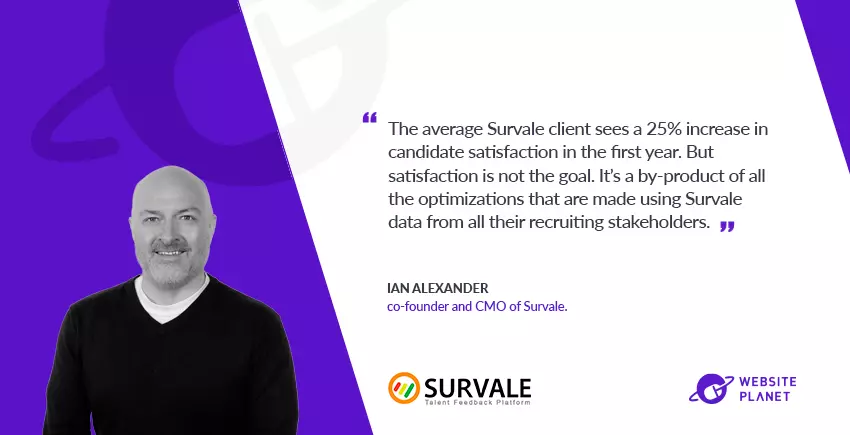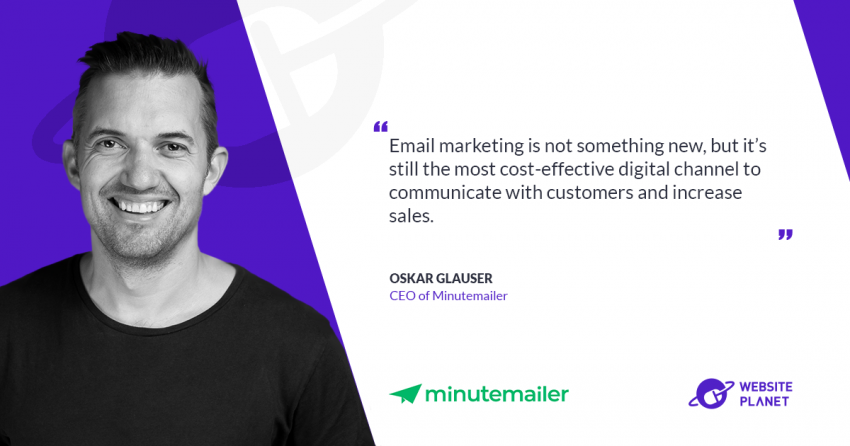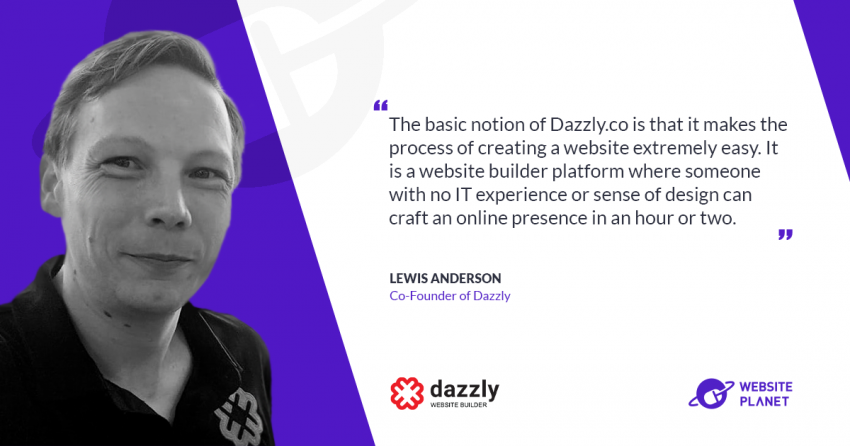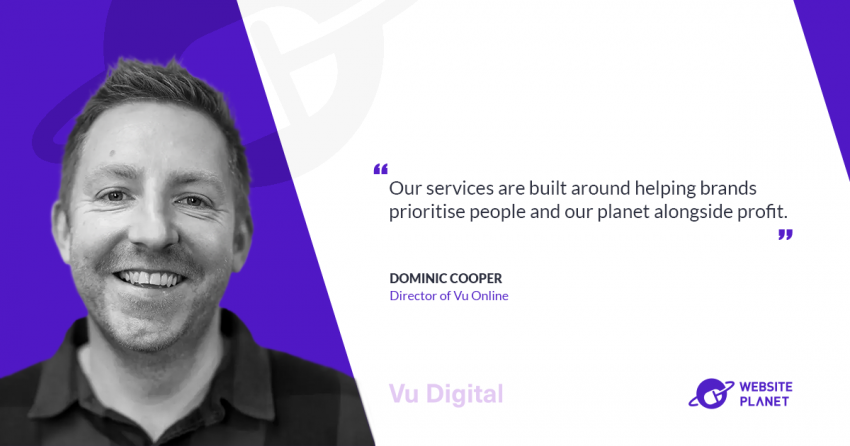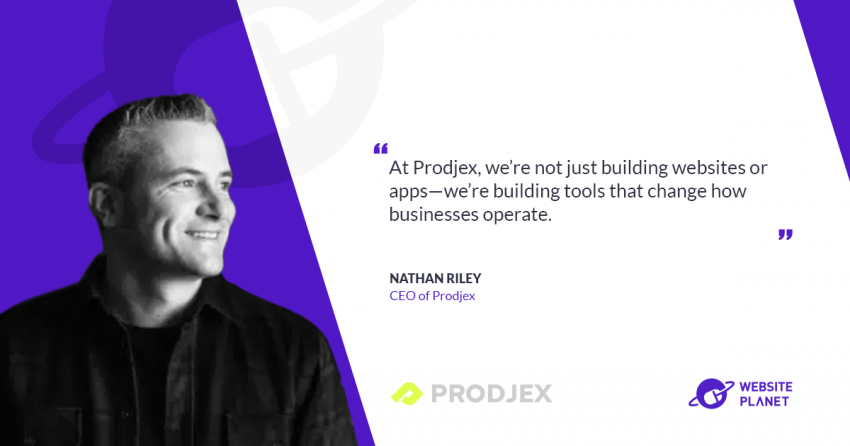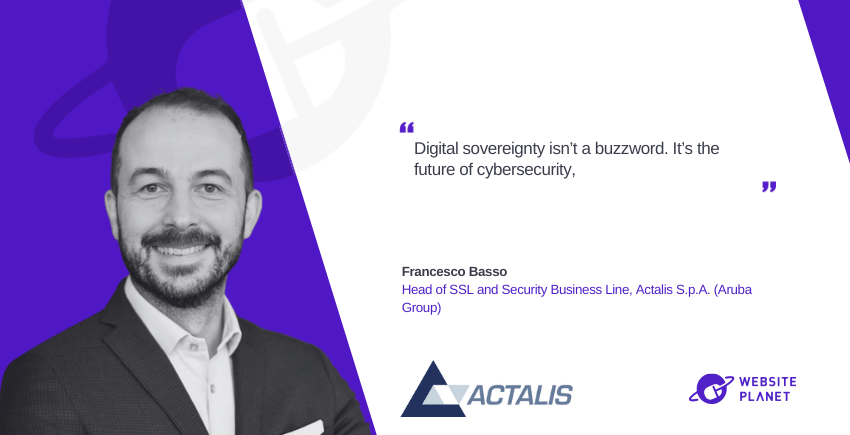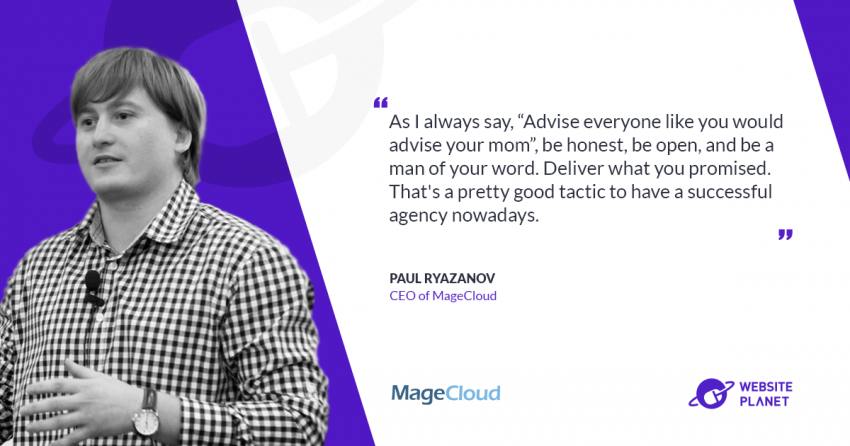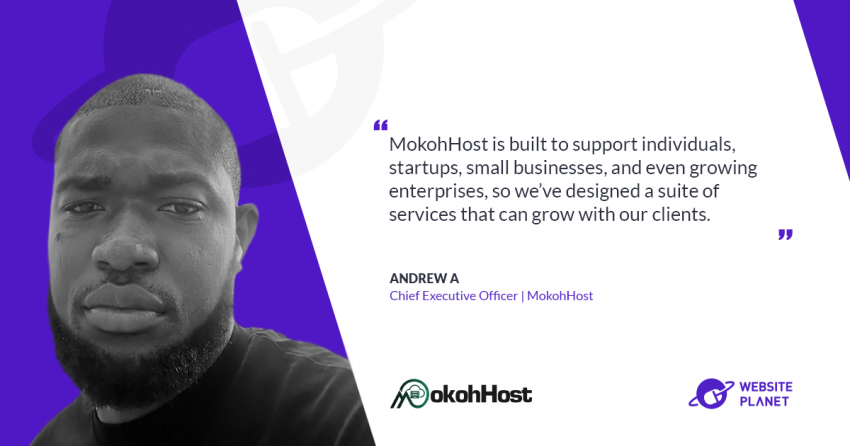Welcome to another interview by
Website Planet. Learn how the best online companies have built their online presence, how they stand out, and their predictions for the future.
Our guest today is Ian Alexander, co-founder and CMO of Survale.
Ian has been in the HR Tech industry forever, building and bringing to market some of the industry’s first SaaS products and participating in a handful of acquisitions and exits over the years.
Survale is a real time talent feedback platform that provides some of the world’s top employers with feedback data and analytics to help them optimize the people, processes and technologies they use to hire employees.
We discovered the key factors that helped Survale win the Human Resource Executive Magazine’s Top HR Product award and reach hundreds of companies that now use Survale to process feedback from over 120 million candidates.
What problems are you solving with your products and services?
Organizations invest large amounts of time and money attracting job seekers and acquiring candidates. Research is clear that the way in which they treat these candidates can have a huge effect on how fast they can hire, the quality of the candidates they hire and how much it costs them to hire these candidates.
Hence, organizations build processes and use technologies to assess and ultimately convert their best candidates to employees. But they have little insight into whether their people, processes and technologies are helping them hire or hurting them. Survale gathers feedback from candidates, recruiters and hiring managers after each interaction and delivers that feedback to employers showing them exactly what is working and what isn’t.
Survale answers questions like:
“Is my career site helpful and is it sending the right messages to candidates?”
“Which hiring managers are good interviewers and which are driving potential employees away?”
“Why are candidates accepting offers and why are they turning them down?”
“Is my assessment technology easy to use, or is it driving candidates to my competitors?”
“Are my recruiters aligned with hiring managers and are they properly serving their needs?”
Survale gathers this feedback automatically in the background as candidates move through the hiring process in real time, so all talent acquisition stakeholders have up to the minute dashboards. Prior to Survale, talent acquisition organizations would periodically survey candidates, or ask newly hired employees a couple of questions to monitor candidate satisfaction as a KPI for recruiting. That process is pretty useless because it yields miniscule response rates and no actionable insights.
Survale engages all candidates in real time and uses built in intelligence to pinpoint problems down to the location, job, hiring manager, hiring stage, system and more.
🚀 The average Survale client sees a 25% increase in candidate satisfaction in the first year. But satisfaction is not the goal. It’s a by-product of all the optimizations that are made using Survale data from all their recruiting stakeholders.
What are the top reasons people choose you over competitors?
We pretty much invented this category. There was no other solution like Survale before we innovated the feedback space. Before Survale (and still) organizations would try to use a broad solution like SurveyMonkey or an enterprise customer service platform like Qualtrics to send long, ad hoc surveys manually.
So I would say
our unique, always on, automated approach to feedback is the number one reason we get chosen. There was no other solution that integrated with your core systems, triggered feedback at key moments of truth in the process and then provided analytics that could pinpoint problems and successes down to specifics. And that integration lets Survale know everything about the candidate so we don’t have to ask them what job they applied for or who their recruiter was. So feedback requests are short and focused on a single transaction.
Secondly,
we’re purpose built for HR so Survale works for HR processes out of the box. We’ve had clients find out that recruiters were moving candidates through interview stages without ever speaking with them. They discovered that expensive technology was making finding jobs tougher for internal candidates.
Clients regularly learn what makes their top performing recruiting teams successful and then implement those best practices across the department. One client found out that 70% of their candidates bought their product prior to interviewing, establishing talent acquisition as a revenue center. All by asking candidates for feedback and having a system with analytics that assess and prioritize that feedback data.
How is your website built?
Survale was developed using very light technologies: JS, Angular, etc. It’s a very modern stack. It’s easily extensible and, most importantly, it handles a LOT of transactions.
We work with large clients with lots of candidates and that means a lot of pulse feedback requests. Remember, we pulse candidates, recruiters and hiring managers after key transactions. That’s on the career site, after applying, after a phone screen, after interview and after offer. We continue that through onboarding, first year quality of hire and employee feedback as well. Our tech has to be fast and light. We use APIs and web hooks to integrate with core technologies like applicant tracking systems and HRMS.
The pulse feedback requests are fast and fully branded with client graphics and colors. The question types are engaging. Our client, Chewy.com, for example, asks for satisfaction using a 1-5 “paw” scale. Clients can showcase their unique employer brand to candidates.
Survale’s analytics let clients create different “Views,” each with custom dashboards to showcase their KPIs and important analytics. A talent acquisition manager can have a unique dashboard that shows overall satisfaction for their team, hiring manager satisfaction with individual recruiters, important candidate comments for their team and individual candidate satisfaction scores for each recruiter over time. An operations manager can have full analytics focused on each step of the hiring process, technologies, satisfaction over time and more.
All of it can be filtered by location, recruiter, source of candidate – you name it. They would also have widgets that show them their top problems and successes prioritized by their effect on overall satisfaction. The whole system is designed to allow organizations to cascade important data through the entire company to the correct role to utilize that data for improvement.
Since you started, what helped you grow and retain your audience?
Survale was purpose built as a full featured feedback platform for monitoring and optimizing any talent facing program in the enterprise. Purpose built for HR. But we have been laser focused on talent acquisition because that’s our best use case and we know that business. We focused on large companies because they hire the most and get the most value out of the platform. And we had a “land and expand” strategy to branch out from hiring to onboarding to employee experience management after we won the talent acquisition department.
Because we know talent acquisition, we were able to build a very mature product in V1. Our system integrates with others and measures experiences after transactions. Enterprise hiring processes and systems can be highly complex and we knew how to engineer that in from the get go.
From there we have focused on making clients happy at all costs and letting them drive enhancements as we go forward.
In addition, we leverage partnerships with other vendors, both technical and service based. This has allowed us to leverage a small sales team into some big logo clients at a much faster clip.
What are the most important tools in your techstack?
As a profitable, self funded company we need tools that are inexpensive to get started, but can grow with us. From a front office standpoint, that’s Hubspot CRM and Google Workspace. As our needs grow, these two tools allow us to expand our usage and the value we get from them. From an internal communication standpoint, we live on Slack as a team. We are a virtual organization, with employees throughout North America and India. Slack allows us to interact quickly and visibly as a team.
From a dev perspective, we host a VPN on AWS and leverage their full suite of services and infrastructure to deliver our service. Again, it allows us to start small and grow easily. We manage code with BitBucket and track projects with Jira.
A look into the future
We already leverage AI into our platform and I think any software company leader would be foolish not to be diving headfirst into this tech. From UI and data delivery for our platform to coding and service delivery, we are at an inflection point that will change how software is built, consumed and serviced. This is especially important for platforms like ours that deal with “feedback.” We have an AI that listens to unstructured text feedback and understands sentiment already, but that is just the tip of the iceberg when it comes to how future feedback platforms will work. We are 100% here for it. But that’s as specific as I will get in talking about what we are working on and what we have planned. I can’t trust you to keep it a secret.
Where can we go to learn more?
Website: survale.com
X: @survaleinc
LinkedIn: https://www.linkedin.com/company/survale
